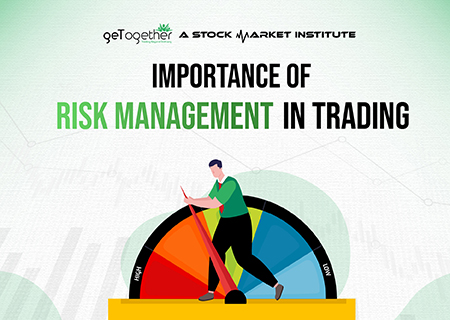A Detailed Guide to Understanding the Importance of Risk Management
Wiki Article
Checking out the Relevance of Risk Management for Effective Decision-Making Approaches
In the elaborate globe of company, Risk Management emerges as a crucial aspect in the decision-making procedure. The ability to identify prospective dangers and possibilities, and plan appropriately, can lead to the difference between success and failure. With devices such as SWOT and PESTEL, companies are geared up to make informed options, cultivating strength and versatility in an ever-changing setting. Wondering exactly how this functions? Allow's unpack the characteristics additionally.Recognizing the Principle of Risk Management
Risk Management, an essential component in decision-making, is usually misunderstood or oversimplified. Usually, it describes the recognition, analysis, and prioritization of risks to minimize, keep track of, and control the likelihood or effect of unfavorable occasions. It's not simply regarding avoiding negative results, but likewise concerning identifying possible chances. Risk Management includes structured and disciplined methods, utilizing data and insightful assessments. It calls for a detailed understanding of the company's context, goals, and the prospective threats that can prevent them. From financial uncertainties, lawful responsibilities, tactical Management errors, to accidents and natural catastrophes, it addresses different risks. Notably, reliable Risk Management is not stationary; it's a constant, progressive process that advances with changing conditions.The Duty of Risk Management in Decision-Making Processes
In the world of calculated planning and company procedures, Risk Management plays an essential role in decision-making processes. Risk Management thus comes to be a crucial device in decision-making, aiding leaders to make educated choices based on an extensive understanding of the risks included. Risk Management serves as an essential part in the decision-making processes of any company.
How Risk Management Enhances Strategic Preparation
In the context of critical preparation, Risk Management plays an essential function. Initiating with the recognition of prospective risks, it additionally includes the execution of Risk reduction steps. The duty of Risk Management is vibrant but not fixed, as it demands consistent tracking and adjusting of techniques.Determining Potential Threats

Implementing Risk Reduction
Having established the significance of determining prospective threats, the next step is to check out Risk mitigation. This procedure entails developing and implementing techniques to manage recognized dangers properly. It is an essential aspect of critical planning as it improves decision-making by reducing prospective negative outcomes. Risk reduction techniques can vary from Risk evasion, Risk transfer, to risk decrease. Each strategy needs to be customized to the certain Risk, considering its possible effect and the company's Risk tolerance. Efficient Risk reduction calls for a deep understanding of the Risk landscape and the prospective effect of each Risk. This understanding makes it possible for companies to prioritize risks and designate resources efficiently, making sure that the most substantial dangers are resolved initially.Tracking and Readjusting Techniques
Though Risk mitigation is a crucial action in critical preparation, continuous monitoring and modification of these techniques is similarly vital. This i was reading this recurring process enables organizations to identify brand-new dangers and reassess existing ones, ensuring the executed methods remain reliable in the ever-changing company setting. It also offers a chance to examine the success of the Risk Management measures, enabling modifications to be made where necessary, additional enhancing tactical planning. Efficient tracking and modification call for the usage of analytics and key performance indicators (KPIs) to determine effectiveness. These devices give beneficial data-driven insights that can inform tactical decision-making. As a result, surveillance and changing Risk Management methods is a critical element for boosting a company's resilience and critical preparation.Instance Studies: Effective Risk Management and Decision-Making
In the world of service and finance, successful Risk Management and decision-making typically serve as the columns of prosperous ventures. These cases highlight the worth of sharp Risk Management in decision-making processes. These instances emphasize the important duty of Risk Management in strategic decision-making.Devices and Methods for Efficient Risk Management
These devices, such as Risk signs up and warm maps, help in recognizing and assessing potential risks. Risk response strategies, a key component of Risk Management, include accepting, preventing, moving, or mitigating threats. With these strategies and devices, decision-makers can navigate the complex landscape of Risk Management, therefore helping with informed and effective decision-making.Future Fads in Risk Management and Decision-Making Strategies
As we explore the huge landscape of Risk Management, it ends up being noticeable that the tools and methods used today will continue to progress. The concept of Risk culture, where every participant of a company is aware and involved in Risk Management, will certainly gain a lot more prestige. These fads herald a more comprehensive and proactive method in the direction of Risk Management and decision-making.Conclusion

hop over to here Risk Management thus becomes a crucial tool in decision-making, assisting leaders to make enlightened selections based on a thorough understanding of the dangers entailed. Risk reduction methods can range from Risk avoidance, Risk transfer, to take the chance of reduction (importance of risk management). Effective Risk mitigation requires a deep understanding of the Risk landscape and the potential influence of each Risk. Risk action techniques, a vital element of Risk Management, entail accepting, avoiding, moving, or mitigating dangers. The concept of Risk culture, where every participant of an organization is mindful and included in Risk Management, will certainly gain extra importance
Report this wiki page